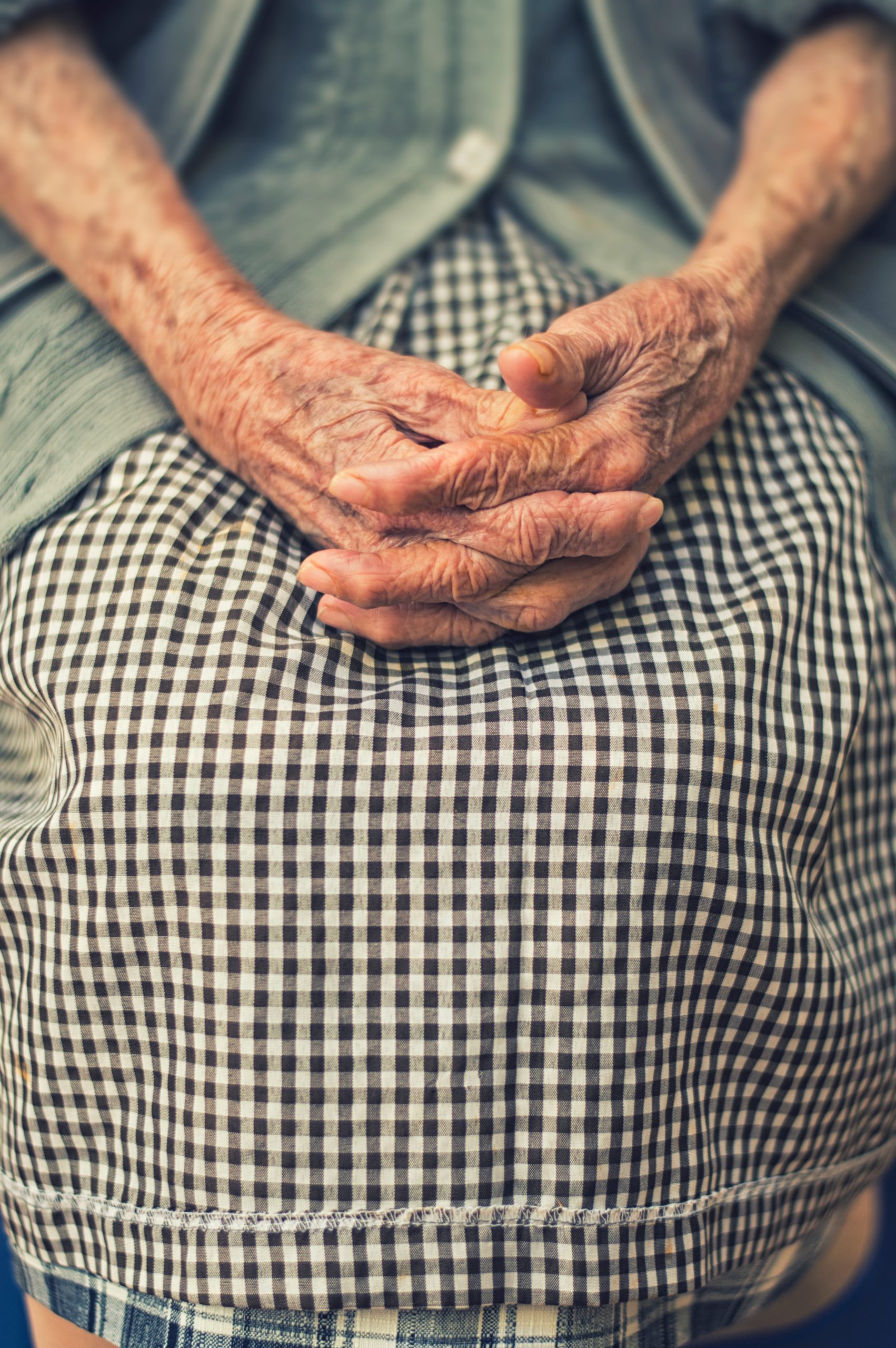Aging and Oxidative Stress
Oxidative Stress
Oxidation is a chemistry term which refers to a molecule gaining an oxygen atom or losing an electron. Inversely, reduction is when a molecule loses an oxygen atom or gains an electron. Examples of oxidation include an avocado turning brown after being exposed to air, a bumper forming rust or a cut becoming inflamed. All of these processes require oxygen to occur. Oxidation occurs in the form of a redox reaction where one atom/molecule is oxidized while the other is reduced. Every cell in our body uses oxygen to produce energy. Energy production occurs in an organelle in our cells called mitochondria. Mitochondria can be thought of as mini power plants and it is where the body produces most of its energy in the form of adenosine triphosphate or ATP. Ten percent of our body weight is mitochondria and we produce our body weight daily in ATP. Occasionally, during the metabolization of oxygen occurs in the mitochondria products called free radicals are produced.

Free Radicals and Reactive Oxygen Species (ROS)
Free radicals are atoms or molecules which have unpaired highly reactive electrons. Free radicals can interact with other atoms or molecules (such as DNA, lipids and proteins) in the cell and steal electrons from them. This results in aberrations, in the molecule whose electron was stolen, and can lead to cellular damage. Additionally, the now damaged molecule can react with another atom or molecule and this creates a chain reaction which can overwhelm the body’s natural defenses.
Another class of potentially harmful molecules are reactive oxygen species (ROS). Reactive oxygen species are molecules containing oxygen and include oxygen ions and peroxides. They are formed in the metabolism of oxygen and play important roles in normal cell functioning. However, during times of bodily stress ROS’s can dramatically increase which can overwhelm a cell’s defenses and damage the cell.
Damage to cellular DNA can cause the aberrant cell to divide more rapidly than a healthy cell and this is the start of a cancerous cell. It is for this reason that smoking can lead to lung cancer. Therefore, the more oxygen the body uses the more free radicals produced which leads to greater oxidation. In addition to oxygen utilization, free radicals can also be formed from exposure to X-Rays, cigarette smoking, air pollutants, heavy metals, ozone, some medications and chemicals. Keep in mind that oxidation is a natural process and in most circumstances helps the body. Normal cells produce a small amount of free radicals. For instance, internally generated sources of free radicals occur in mitochondria, peroxisomes, xanthine oxidase, phagocytosis, inflammation and during exercise1. Our immune system uses free radicals to destroy bacteria and viruses. The body is well equipped to handle these endogenous forms of free radicals by creating enzymes that reduce ROS, by utilizing antioxidants and by being able to repair the damage done by free radicals and ROS. In fact low to moderate levels of oxidation help modulate the immune system and enhance cellular processes.
Antioxidants
Antioxidants are reducing agents which can donate an electron to free radicals preventing them from reacting with other molecules in the cell. However, when an antioxidant donates an electron it becomes oxidized; therefore, antioxidants must constantly be replenished. Additionally, under certain circumstances antioxidants may become oxidative in nature and increase the oxidative stress on the body. Our main source of antioxidants are found in fruits, vegetables and animal sources and include vitamin C, vitamin E, flavonoids, polyphenols, minerals (selenium), alpha lipoic acid, melatonin, CoQ10 and many others substances. Since different antioxidants work on different pathways in the body we need many different vitamins and minerals to act synergistically together to neutralize free radicals. This is why it is prudent to consume a wide variety of different foods. Antioxidants work in two different ways. The first way is that they can prevent oxidation from occurring by stabilizing ROS and free radicals. The second is that when a free radical starts a chain reaction the antioxidant can terminate the reaction mid-way through.
What is Oxidative Stress?
Oxidative stress can be thought of as the balance between the production of free radicals/ROS and the body’s ability to detoxify the free radicals/ROS or repair the damage done by them. Normally the body is equipped to handle these stressors and the total burden placed on the body is manageable. However, overexposure to cigarette smoke, UV radiation, other environmental toxins and even excessive amount of exercise can overwhelm the body causing reactive oxygen species to accumulate. The accumulation of ROS damages cells and causes mutations within the cells. Increased levels of oxidative stress have been linked to arthritis, diabetes, cancer, atherosclerosis, heart attacks, asthma, COPD, stroke, neurodegenerative diseases (such as Alzheimer’s and Parkinson’s) and many other diseases1.
What Role Does Oxidation Play in Aging?

Did you know that oxidation is the cause of wrinkles and sagging skin? The oxidative stress theory of aging was first proposed by Denham Harman in the 1950’s. He conceived the idea that as time progresses the number of ROS in our body increases which negatively affects our overall level of oxidative stress. Invariably, the ROS which are produced in the mitochondria will bind to proteins, lipids and carbohydrates which are the building blocks of our bodies. These building blocks are damaged and destroyed and the body becomes less and less capable of repairing the damage done. Our skin sags because we lose collagen to oxidative stress and then are unable to replace the collagen. Our joints begin to ache because the connective tissue becomes oxidized and is destroyed and we cannot replace the connective tissue at the rate at which it is oxidized. Oxidation also weakens body systems which is why we are more likely to injure ourselves as we get older and why our chances of mortality increase from causes such as strokes, heart attacks and cancer. Furthermore, ROS can damage neurons in the brain which leads to neural degeneration and is one of the reasons why we begin to lose our memory as we age. As we can see, oxidation is implicated in many of the most common illnesses that affect humans.
How Can We Prevent Oxidation?
In the past when we ate a healthy diet and our environment was relatively free of pollutants, the body had everything it needed to counteract oxidative stress. Despite an increase in our lifespan, the rates of chronic disease in Western society have progressed at an even faster rate. Nowadays, the general population does not eat a nutrient dense diet containing ample antioxidants. Additionally, the amount of environmental pollutants are exponentially higher than they used to be. Not coincidentally the amount of chronic and degenerative diseases in the population has skyrocketed.
The first and most important step to preventing oxidative damage is getting a good night’s sleep. It is during sleep that our body repairs and regenerates tissue while also detoxifying ROS and free radicals. Second, eating a nutrient dense diet is vitally important so that the body contains a plethora of antioxidants and other detoxifying substances to counteract oxidative stress. Did you know that sugar is the most oxidative food we can eat and therefore a diet high in sugar will cause a great deal of oxidative stress on the body. Lastly, brief bouts of high intensity exercise has been shown to increase our resistance to stressors and needs to be included in a healthy lifestyle. Did you also know that the vitamin and mineral content of plants are lower than they were 100 years ago?2 Supplementation can mimic some of the vital components of plants that are lacking in today’s agriculture. It is recommended that you consult with your Naturopathic Doctor prior to supplementation. This is because there are a few things that people are doing wrong with supplementation and we want to make sure you avoid these pitfalls. Additionally, not all nutrition plans are for everyone, nor are all exercise plans; therefore, it is vital that you consult your Naturopathic Doctor who can create a treatment plan that is right for you. This treatment plan may include supplementation, botanical medicine, homeopathy, injection therapies or one of many other treatments offered at the Natural Terrain Naturopathic Clinic.
Hormesis
Not all stress is bad and in fact some stress is good and strengthens the body. Have you ever started running and could barely run 1km, but within a few short months you could run that multiple times over. This is hormesis at work. Hormesis is the concept that small doses of a stressor help prime the body to handle that stressor better in the future. This concept also applies to heat, toxins, lack of food and a broad range of other stressors. It has been found that by limiting food intake and fasting intermittently we can actually increase lifespan because multiple different survival mechanisms are activated (3). It is thought that the production of free radicals also primes the body and strengthens it. This in turn can lead to an increased lifespan. You may be thinking, “So it is true what doesn’t kill me makes me stronger!” Not quite. Short term, small doses of stressors are the key. When stressors last a long time they cause an accumulation of ROS in the body which overwhelm our natural defenses and in the end cause health problems.
If Oxygen Causes Oxidation, Why Are We Using Ozone To Treat Patients?
Ozone (O3) is a molecule containing three oxygen atoms as compared to the dioxygen (O2) that we normally breathe. The fact that ozone contains one more oxygen molecule means that it is highly reactive. This property makes ozone oxidative, but this is what also gives ozone its healing properties. As it happens, ozone is quite damaging to the respiratory system when inhaled (4) as well as to most tissues that are exposed to it in large amounts. However, when blood is mixed with ozone in a therapeutic dose the oxygenation of blood increases tenfold (4). This oxygenation of blood has many therapeutic benefits, but predominantly it has immunomodulatory effects. This means that for those individuals who have overactive immune systems: such as autoimmune, chronic and inflammatory diseases ozone will calm the immune system down.
Many illnesses (especially structural disorders) are caused by a lack of blood supply which results in lack of oxygen to tissues as well as allowing a build of a waste. This prevents an individual’s body from properly healing. Ozonation increases oxygenation of the blood and up regulates the immune system so that when it is injected into areas which previously had limited blood supply ozone stimulates a low grade immune response which repairs and regenerates tissues. Therefore, when given in a therapeutic dose ozone has a hormetic effect on the body which stimulates the body natural healing capabilities providing a multitude of benefits.
1. Lien Ai Pham-Huy, Hua He, and Chuong Pham-Huy. 2008. Free Radicals, Antioxidants in Disease and Health. Int J Biomed Sci. Jun; 4(2): 89–96.
2. Davis D. 2009. Declining Fruit and Vegetable Nutrient Composition: What Is the Evidence? HORTSCIENCE VOL. 44(1).
3. http://www.intermittentfaster.com/intermittent-fasting-science/
4. Sagai M, Bocci V. 2011. Mechanisms of Action Involved in Ozone Therapy: Is healing induced via a mild oxidative stress? Med Gas Res. 2011 Dec 20;1:29. doi: 10.1186/2045-9912-1-29.



